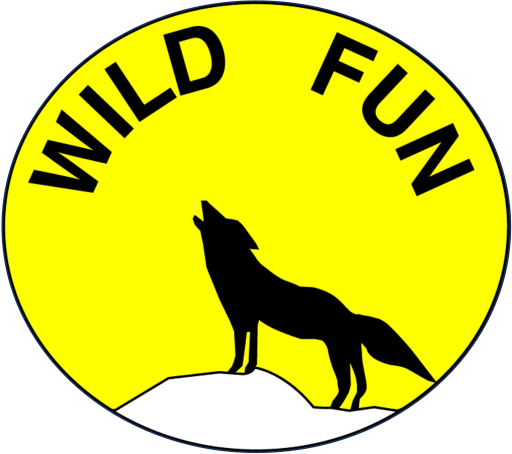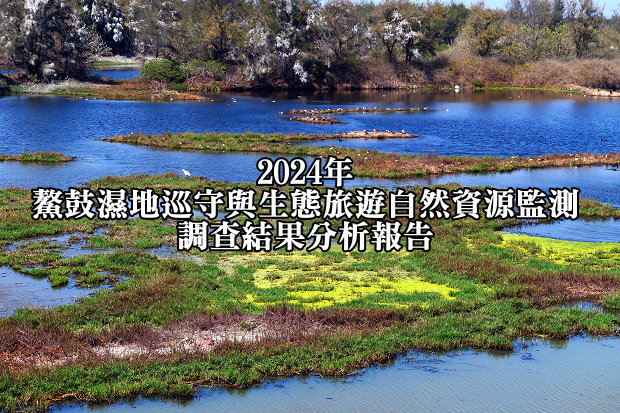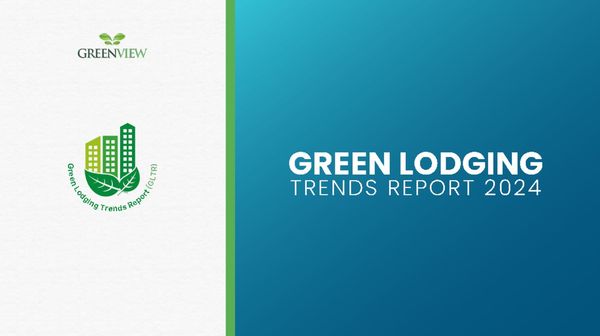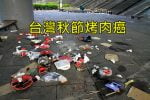2009年一月份專程到澳洲大堡礁看其所謂的海上生態旅遊操作情形,發現有生態旅遊標章的業者也不過爾爾(不過樣本數不足,純為我個人感覺),跟一般大眾旅遊無甚差異,而無標章者更是沒有環保意識,而在重要景點的整體環境教育宣導更是闕如,與我長期接受澳洲生態旅遊管理多麼嚴謹的認知有極大差距,因此頗為失望。我曾撰寫「澳洲大堡礁生態旅遊問題多」一文向大家報告觀察心得,感謝許多先進與朋友回應意見給我。
經過澳洲朋友輾轉介紹,終於與大堡礁管理單位「大堡礁海洋公園管理局」(Great Barrier Reef Marine Park Authority)接上線,寫信問他們一些我的疑惑,希望他們能告知相關管理規定。經過一段很長時間與該單位幾位職員的周旋,終於獲得完整回應,並得到同意我可以翻譯成中文放在網上公布。
底下就是他們對我疑問的回答,我按照信件內容呈現,最後附上英文原文供大家看原意,若有翻譯錯誤,也請不吝指正。
澳洲大堡礁海洋公園管理局對我疑問的回應:
每一家大堡礁旅遊業者都須獲得「大堡礁海洋公園管理局」與「昆士蘭省公園暨野生物管理局」聯合核發的許可,有各種不同許可項目,業者會取得適用其操作內容的經營許可。您可以點閱https://www.gbrmpa.gov.au/corp_site/permits/pems_public/dsp_search.cfm?report=currPermit&瞭解各業者獲得許可的營業內容。
另外,大堡礁海洋公園管理局訂有業者守則,鼓勵業者遵守,但沒有強制性。(譯按:共有30項行為或活動如停錨、賞海龜、賞鯨豚、浮潛、潛水、使用化學品、釣魚、餵魚……等設有建議規範,您可點閱https://www.gbrmpa.gov.au/onboard/home/high_standards/responsible_reef_practices瞭解細部規定。)
大堡礁海洋公園管理局認定通過澳洲生態旅遊協會認證「生態旅遊標章」及「高級生態旅遊標章」之業者是高水準的旅遊業者,他們的表現都遠超過給他們的許可規定及其他經營規範。
接著是我們對您問題的回答:
1.允許餵魚嗎?
回答:絕大部分的業者是被允許餵魚的,但必須在少數幾個餵食點用經過核准的飼料少量餵食,只能由船員投食,且不能以手就口直接餵食。管理局鼓勵業者不在水中有泳客或釣客時餵魚。這些規定都在業者的許可內容上,網站上的業者操作手冊也有這些規定。
2.大堡礁每年有多少遊客?
回答:2008年全天出海遊客量約為160萬人,如果包括不滿三小時的短程遊客(如只是參加玻璃底船賞魚遊程),則遊客數量超過200萬人。這個網站https://www.gbrmpa.gov.au/corp_site/key_issues/tourism/management/gbr_visitation/numbers可以看到從1994年以來的遊客量統計。
3.遊船及小島上的飯店廁所廢污水如何處理?
回答:「昆士蘭海洋保護局」(Maritime Safety Queensland)主管船舶在海上的環保事務,大堡礁海洋管理局則配合提出在大堡礁海域排放廢污水的規定。例如:
- 如果載運超過16人(含),則儲存廢污水到距離最近礁岩、小島、陸地或水耕設施至少1海里(1.852公里)以上的海域傾倒。
- 如果載運15人(含)以下,不在泊船碼頭附近或至少距離水耕設施一海里以上,即可將未經處理的廢污水直接抽排至海洋公園海域。
- 另有排放經過處理的廢污水規定,請參考https://www.gbrmpa.gov.au/corp_site/key_issues/water_quality/vessel_sewage_regs
也可點閱https://www.gbrmpa.gov.au/onboard/home/high_standards/responsible_reef_practices/wastewater_sewage,_greywater__and__bilge_water瞭解海洋公園訴請業者處理廢污水的守則。(譯按:沒有強制性)
4.業者(包括小島上的飯店)如何處理垃圾
回答:不准任何人在大堡礁海洋公園、小島上的國家公園及海灘亂丟垃圾或傾倒廢棄物(包括塑膠類、漁網及釣魚線)。大堡礁海洋公園的旅遊業者們必須將垃圾運回陸地,然後依照各所在地政府法令處理。海洋公園管理局與各地方議會攜手努力改善海水品質、陸上垃圾處理程序及減緩氣候變遷。現階段確實有一些港口沒有做資源回收工作。
5.在大堡礁海洋公園內如何處理化學藥劑?
回答:法令規定不准任何人在大堡礁海洋公園內傾倒有毒物品或液體。海洋公園管理局訂有化學物品處理守則,鼓勵業者使用「可生物分解」的清潔用品(譯按:沒有強制性)。
6.對業者(包括小島上的飯店)設有遊客總量管制嗎?
回答:在凱恩斯、Hinchinbrook、whitsundays三個近岸特別計畫區訂有可以每天進入該區域的船隻數,但也開放少數額外船隻可以預約進入該區。
至於遊客量管制,一般而言,旅遊業者通常會受限於前往區域所能容納的遊客量,因為要前往在凱恩斯、Hinchinbrook、whitsundays三個近岸特別計畫區珊瑚礁的船隻都有載客量限制。例如凱恩斯近岸的珊瑚礁分為容許超過60人的「密集利用區」、低於60人的「高利用區」及最多15人的「低利用區」。細則請點閱https://www.gbrmpa.gov.au/onboard/home/where_you_go/cairns_and_port_douglas/cairns_planning_area/group_size_limits_in_the_cairns_planning_area。不過,部分業者獲有特別許可,可以超過這些限額。
舉個例子,「海洋公園管理局」與「昆士蘭公園暨野生物管理局」就規定到凱恩斯外海的Low礁區必須預約(譯按:每天只限二艘船,每船最多15人,每業者每年最多50天)。細則請看:https://www.gbrmpa.gov.au/corp_site/key_issues/tourism/management/low_isles_bookings
昆士蘭公園暨野生物管理局也對其他小島設有遊客管制量,例如綠島(Green Island)每天最多2000名遊客,由多家業者分享這數額。
7.管理當局如何監督業者(含小島上的飯店)?
回答:「海洋公園管理局」與「昆士蘭公園暨野生物管理局」聯合負責大堡礁海洋公園及世界遺產的例行管理任務(day-to-day management )(譯按:包含資源保育、遊客教育與服務、資源評估與監測、監管巡視)。
他們有職員負責巡察大堡礁,協同單位有澳洲海關、昆士蘭船舶與漁業巡邏隊、澳洲水警及其他機關,詳情請點閱:https://www.gbrmpa.gov.au/onboard/home/marine_park/management_arrangements/whos_who_of_management。
部分業者有加入「千里眼順風耳專案」(Eyes and Ears Program),協助通報意外或違規事件。「海洋公園管理局」與「昆士蘭公園暨野生物管理局」會運用這項資訊加強巡察。
(譯按:至於我向他們反映業者在海底及海面遊客旁餵魚,以及將泡過潛水衣的化學藥劑直接倒入大堡礁海域,他們在另外信上回覆說會查明,但沒有下文。)
8.何處可取得海洋生態旅遊或海洋生態保育相關的解說或環境教育資料?
回答:目前可以在海洋公園管理局網站、海洋公園管理局與昆士蘭公園暨野生物管理局區域辦公室、遊客中心及海洋公園的旅遊業者處取得相關資訊。
(譯按:至於我反映凱恩斯遊艇碼頭及業者聯合售票中心大廳看不到任何海洋環境教育資訊,他們在另外信上說感謝提醒,會改進。)
以下是可以公開的英文原信,請參考:
Hi Bird Lai
You recently asked if you could put my response to your questions about ecotourism on the Great Barrier Reef on your blog. The answers are below but they no longer include references to particular operators. It would be okay for this generic information to be on your blog.
To begin with every tourism operator on the Great Barrier Reef must have a Marine Parks permit usually issued jointly from the Great Barrier Reef Marine Park Authority (GBRMPA) and the Queensland Parks and Wildlife (QPW). These have a number of generic permit conditions have and they may also have some specific conditions that relate to just that operation. You are able to look at each permit on the GBRMPA web site provided you know the permit holder’s details.
In addition, the GBRMPA has a range of Responsible Reef Practices that we encourage all operators to follow. These are not compulsory.
The GBRMPA recognises operators who have been certified by Ecotourism Australia at the Ecotourism level or Advanced Ecotourism level as High Standard operators. These operators are acting above and beyond what is required by their permits and other management arrangements.
Here are the the points you raised in your email and my responses:
1. Is feeding fish permitted?
Fish feeding is permitted for most tourism operations. They must only feed a small amount of approved feed at a small number of feeding stations on their trip. Only staff can feed the fish and they must not feed them by hand. The GBRMPA encourages operators to avoid feeding them near people who are in the water. These rules are conditions on their permit but they are also available on the GBRMPA website Onboard – The Tourism Operator’s Handbook on the fish feeding page.
2. How many tourists in Great Barrier Reef a year?
In 2008, around 1,600,000 visitors went out for a full day (greater than 3 hours). If we include people who go on short visits (less than 3 hours such as glass bottom boat tours) this rose to just over 2,000,000. Here is a link to a web page about visitor figures since 1994.
3. What’s the process for dealing with the toilets waste water of the operators in Great Barrier Reef (include resorts in islands) ?
The Queensland Government Department, Maritime Safety Queensland, is primarily responsible for vessel requirements on the water.
The GBRMPA has complementary regulations on the discharge of sewage.
- If you carry 16 or more people on your boat you will need to store your sewage and may discharge it at least 1 nautical mile seawards from the nearest reef, island, mainland or an aquaculture facility.
- If you carry 15 or less people on your boat, you may pump out untreated sewage in the Marine Park if you are outside of a boat harbour or marina or more than 1 nautical mile from an aquaculture facility.
- Other options are available for discharging treated sewage (more details).
Here are the Responsible Reef Practice on waste water.
4. What’s the process for dealing with the garbage of the operators in Great Barrier Reef (include resorts in islands) ?
No one can litter or discharge garbage (including plastics, fishing nets and lines) within the Great Barrier Reef Marine Park or on island National Parks or surrounding beaches. Marine Park operators take their garbage back to shore and dispose of it according to their local council laws. The GBRMPA is working with local councils to improve water quality and land management practices and mitigate against climate change. Some ports do not currently provide for recycling.
The GBRMPA also has a Responsible Reef Practice for litter.
5. What is the right way to deal with the chemical water in the area of GBR?
It is a legal requirement that no-one can dispose of harmful substances or noxious liquids in the Great Barrier Reef Marine Park. The GBRMPA has a Responsible Reef Practice on chemical use which provides biodegradable alternatives.
6. Do there are carrying capacity rules of the operators in Great Barrier Reef (include resorts in islands) ?
There are some management arrangements to limit the number of vessels in the offshore Cairns, Hinchinbrook and Whitsundays areas (GBRMPA planning areas). These were set by the GBRMPA and QPW through public plan of management processes. These set a maximum number of vessels that can access these areas everyday but does provide for a small number of additional vessels if they book to the planning area.
As for specific passenger numbers, generally, tourism operators apply to carry the number of tourists they want to carry although large numbers may limit the actual locations they are able to visit. This is because there are group size limits for any vessel accessing the reefs in the offshore Cairns, Hinchinbrook and Whitsundays areas. For example, the reefs off Cairns are divided into Intensive Use Locations (above 60 people), High Use Locations (up to 60) and Low Use Locations (up to 15) (link to group size map). Some operators are able to take more than this number if their permit specifically allows for this.
The GBRMPA and QPW also have vessel capacity at some locations where additional access is only available with a booking (for example, Low Isles)
QPW also have some carrying capacities set for islands. For example, Green Island has a maximum of 2000 visitors per day. These numbers are shared by a number of operators.
7.How the authorities monitor the operators in Great Barrier Reef (include resorts in islands) ?
The GBRMPA and QPW are jointly responsible for the day-to-day management of the Great Barrier Reef Marine Park and World Heritage Area. As part of this they have staff who patrol the Great Barrier Reef. They work with a range of other organisations such as the Australian Customs Service, the Queensland Boating and Fisheries Patrol and the Queensland Water Police.
Some tourism operators also help us with compliance by being involved in the ‘Eyes and Ears Program’ by sending in incident reports when they are concerned that someone is breaking the rules. The GBRMPA and QPW are able to use this information to focus their patrols.
8. Where do travelers find interpretive materials or visitor’s behaviour guidelines of marine ecotourism and marine conservation education?
Currently the GBRMPA provides its material for tourists through its website, the GBRMPA and QPW regional offices, at information centres and through marine park operators.








It’s great, good job. I have been there more than 10 years ago, and found something wrong, I don’t have any idea now.
良力兄考慮的問題更深入,不過因為我英文能力很差,寫一封信問幾個簡單問題就要花上一、二天時間,實在沒能力再問其他更深入的學問,而且澳洲當局也被我煩得受不了了,我不好意再去吵他們。
也許良力兄可以直接寫信去問他們,也幫我們大家解一解其他疑惑。(我會告訴您電郵址)
至於他們允許將廁所廢污水直接排放到大海,這是最讓我吃驚的,完全出乎我對澳洲管理嚴謹的期望。看來澳洲的生態旅遊還不能稱為模範生,既如此,世界上還有哪裡可以作為生態旅遊經營管理楷模,請大家告訴我,我好去取經。謝謝。
Bird的問題非常犀利,澳洲的作法部份可以做為借鏡。
另外,澳洲容許彈性與局部餵食、排放污水等,也許他們現在的作法仍是在生態忍耐的範圍內。但如果可以多問幾個問題的話? 我想問的是:這些餵食及污水的影響,可有長期監測的計畫? 結果為何? 可有對照餵食、不餵食的相關實驗。 一來,數據說話比較有利。一來,我們可以衡量現狀,現行進行一些研究,作為未來的實際執行的參考。 謝!
真是佩服賴兄求真求實的精神!!老實說,我在澳洲住了四年多 .對於海洋研究的管理辦法很熟 ,但遊憩管理也是邊玩邊看.不過澳洲全民做巡查員的現象 ,是讓大家守法的成功原因之一.
,是讓大家守法的成功原因之一.
Nice job.
很棒的做法, 有些值得台灣學習, 應加以宣導.
 繼續加油!
繼續加油!
赫赫赫、 了得
敬佩
如果再多一些遊客這麼注視著,生態環境才能認真的被維護,方方七月份也要去耶,昆士蘭…下雪中嗎?